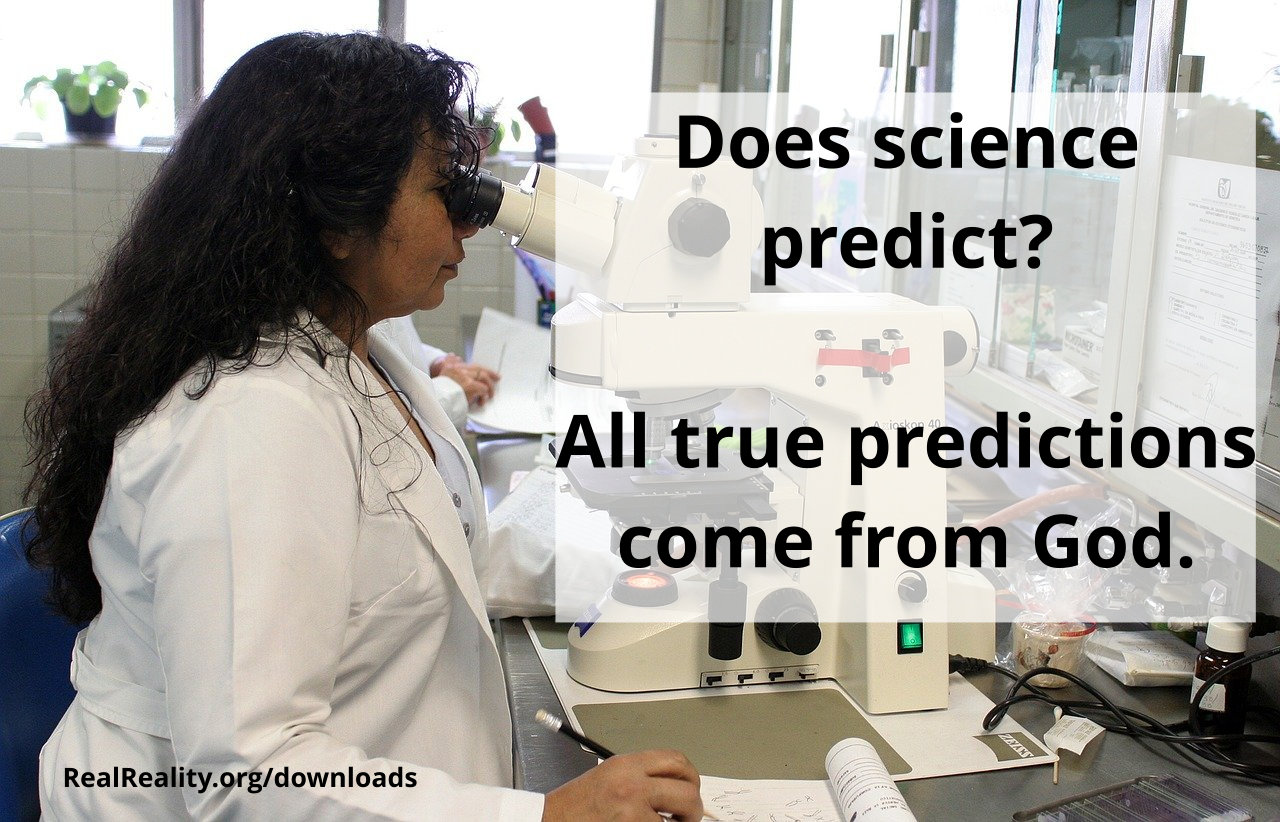
This is the fifth in our series of posts about types of predictions. God hates lies. Lies are an abomination to God. Lies oppose God. Sometimes, ungodly thinkers commit fallacies of prediction to oppose God. This quote explains one level of prediction. Some levels of prediction are helpful. Others are deceptive. Speaking about predictions without pointing out the difference between various levels of prediction is deceptive. It’s an equivocation fallacy and a package deal fallacy. You can look those up in The Encyclopedia of Logical Fallacies free for download from RealReality.org.
<quote from Real Faith & Reason, vol 2>
Level 4 Predictions:
Level four predictions are historical science predictions that were later confirmed by observation. These confirmed predictions don’t prove theories, but theories fail if the predictions fail. All true predictions come from God by divine revelation. We even need divine revelation to understand the predictions of prophecy in the Bible.
Examples:
- predictions made by Humphreys’ White Hole/Time Dilation Cosmology—later observed (D. Russell Humphreys, Ph.D., How can Stars Billions of Light Years Away Appear to Adam & Eve?)
- rapid geomagnetic reversals and planetary magnetic fields predicted by the catastrophic plate tectonics model and verified experimentally (Dr. Andrew A. Snelling, Fossil Magnetism Reveals Rapid Reversals of the Earth’s Magnetic Field)
- the prediction of the Creation-Flood model that no one would find the many necessary transitional fossils between kinds of living organisms—now, explored and verified over decades of research
- other biblical predictions mentioned by Ken Ham during the Nye-Ham debate
These examples are predictions of what we should observe if a certain thing happened in the past. For instance, we could say, “X is what we would expect if Y happened in the past. Let’s test to see if X is true.” However, these are signs rather than proof for theories. Trying to use them as proof is the fallacy of affirming the consequent. In this light, consider the following transcript from a discussion with Dr. Humphreys:
Dr. Wieland: Well, a good scientific theory is one which makes predictions, and it was exciting to hear about several models of yours, based on creation, which generated successful predictions.
Dr. Humphreys: One model was based on 2 Peter 3:5, which talks about how God made the earth, and I applied that. I took that as a clue, and had an idea about how God might have started out the earth’s magnetic field. And then I found that worked fairly well and it gave the right strength for the earth’s magnetic field.
So I then asked myself, ‘Perhaps God used the same method to make the other bodies in the solar system, the sun and the moon and the planets?’ So I calculated the fields of all the planets that we had already explored up to that time, which was 1984, and the theory gave right values for those planets also.
I published these results in a Creation Research Society Quarterly article in December, 1984, and in that article I said that a good test of my theory would be to check out what the strength of the fields of the planets Uranus and Neptune were relative to my theory. For Uranus, the evolutionary predictions were generally about 100,000 times less than my published predictions, so I thought it was a good test.
Dr. Wieland: So, what was the result when Voyager finally made the measurements?
Dr. Humphreys: The result was smack in the middle of my prediction, and 100,000 times greater than the evolutionary predictions. So the creation model was the clear winner in that case.
Dr. Wieland: And for Neptune as well.
Dr. Humphreys: Yes, that’s right.
Dr. Wieland: Did you get any comments from evolutionists about these fulfilled predictions?
Dr. Humphreys: Yes. Stephen Brush, a fairly well-known anti-creationist in the United States, wrote to me after the first prediction came true and I had mentioned this in an ICR Impact article. He said he was basically trying to find some way around the fact that I had made a prediction, and I wrote him a polite letter back and tried to explain things to him. He wrote another letter back and that was the end of the correspondence.
But about six months later, an article by him appeared in Science magazine. The gist of it was that ‘Well, predictions are not really a way to do good science’, so he was basically backing down from the classical scientific view that predictions are a good way to validate a theory.
~ Carl Wieland, Creation in the physics lab
From the examples given, we can see that level 3 predictions aren’t postdictions. In other words, someone predicted it before anyone observed it. Someone didn’t postdict it in response to someone observing it. In every case, the prediction foretold a future observation. Even so, the prediction of the theory doesn’t prove the theory.
<end quote>
#RealFaith&Reason
Have you read this FREE book yet? “Real Faith & Reason” gives the absolutely certain proof of the Bible and the God of the Bible and shows how you can have real faith. This is faith that changes situations and transfigures you from glory to glory.
You can get your FREE copy of Real Faith & Reason, which shows the intersection of faith, reason, truth, and sanity.
http://RealReality.org/Real_Faith_and_Reason_Vol_2_-_Scientia.pdf
Follow on
https://mewe.com/i/petrosscientia
https://usa.life/PetrosScientia
https://parler.com/profile/Petros542287384712/posts
https://www.facebook.com/knowingrealreality
